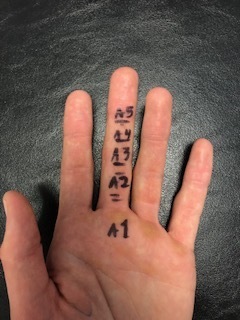
Rock climbing continues to rise in popularity especially after its inclusion in the upcoming Olympic games. However as the number of participants rises so does the rate of injury. In a given year up to 40% of climbers will deal with at least one injury. They can be incredibly frustrating, keeping you from the wall or the mountain.
In this post we will be covering:
What are the most common climbing injuries?
What causes these injuries?
And how do I get back to climbing?
Recent data from Schoffl et al indicated that the three most common injuries among climbers include:
Finger pulley injury (flexor tendon)
Rotator cuff sprain or tear
Tendinopathy (tendon pain)
Flexor pulley injuries
Unique to climbers is a high prevalence of tendon sheath and pulley injuries (making up 50% of injuries). Finger pulleys are a specialized structure that holds your finger flexor tendons to bone during gripping movements. Functionally they work to give your hands a mechanical advantage under high load.
Symptoms of this injury include pain or swelling at the middle part of your finger (typically the third or fourth finger) with an associated “pop” during the injury.Causes of this type of injury include persistent closed hand crimping or a twisting motion during a pocket hold.
Typically recovery time varies from six weeks to six months depending on the grade of the injury. Initial management ought to include “buddy taping” or using the Schoffle H-tape to off load the irritated tendon pulley (checkout our Instagram for a demonstration ).
As that area heals your provider should begin to focus on maintaining finger range of motion while re introducing strengthening drills. This is a great time to take a step back and refine your technique so that you can return better than before.
Tendinopathy (Tendon pain)
Tendons are connective tissue that connects muscles and bone. They function to absorb and transfer forces during movements such as running, climbing, or lifting. Tendinopathy is the general term for changes in the tendon associated with pain, reduced tolerance to loading, and changes in tissue structure.
Oftentimes if there is a sudden increase in load (maybe a change in route or frequency of climbs) the tendon can become “overwhelmed” leading to pain and irritation. Several common tendon conditions include: Golfer’s or Tennis elbow, Jumper’s Knee (patellar), and achilles tendinitis
Symptoms often include dull muscle pain, stiffness, or pinpoint pain with certain movement. On average, with proper treatment (more on that below), tendinopathy can take several months for full improvement.
For the best results, progressive exercise and loading is mandatory. Your health care provider should work to build your capacity while you gradually return to activity
Summary:
Injuries of any time can be immensely frustrating especially when they hold you back from what you’re passionate about. One good thing to know-- the majority of climbing injuries do not require surgery and can be managed with the right mix of hands on care and rehab.
Huge thank you to Nicole Brown and the team at Mosaic Climbing in Loveland for hosting Dr. Kemp over this past month and providing us a platform to share this info!
If you have any questions about your specific injury or in getting treatment that is right for you, contact us at 513-531-2277 or schedule here
References:
Jones G, Johnson MI. A Critical Review of the Incidence and Risk Factors for Finger Injuries in Rock Climbing. Curr Sports Med Rep. 2016 Nov/Dec;15(6):400-409. doi: 10.1249/JSR.0000000000000304. PMID: 27841811.
Schöffl V, Heid A, Küpper T. Tendon injuries of the hand. World J Orthop. 2012 Jun 18;3(6):62-9. doi: 10.5312/wjo.v3.i6.62. PMID: 22720265; PMCID: PMC3377907.(2020- update)




